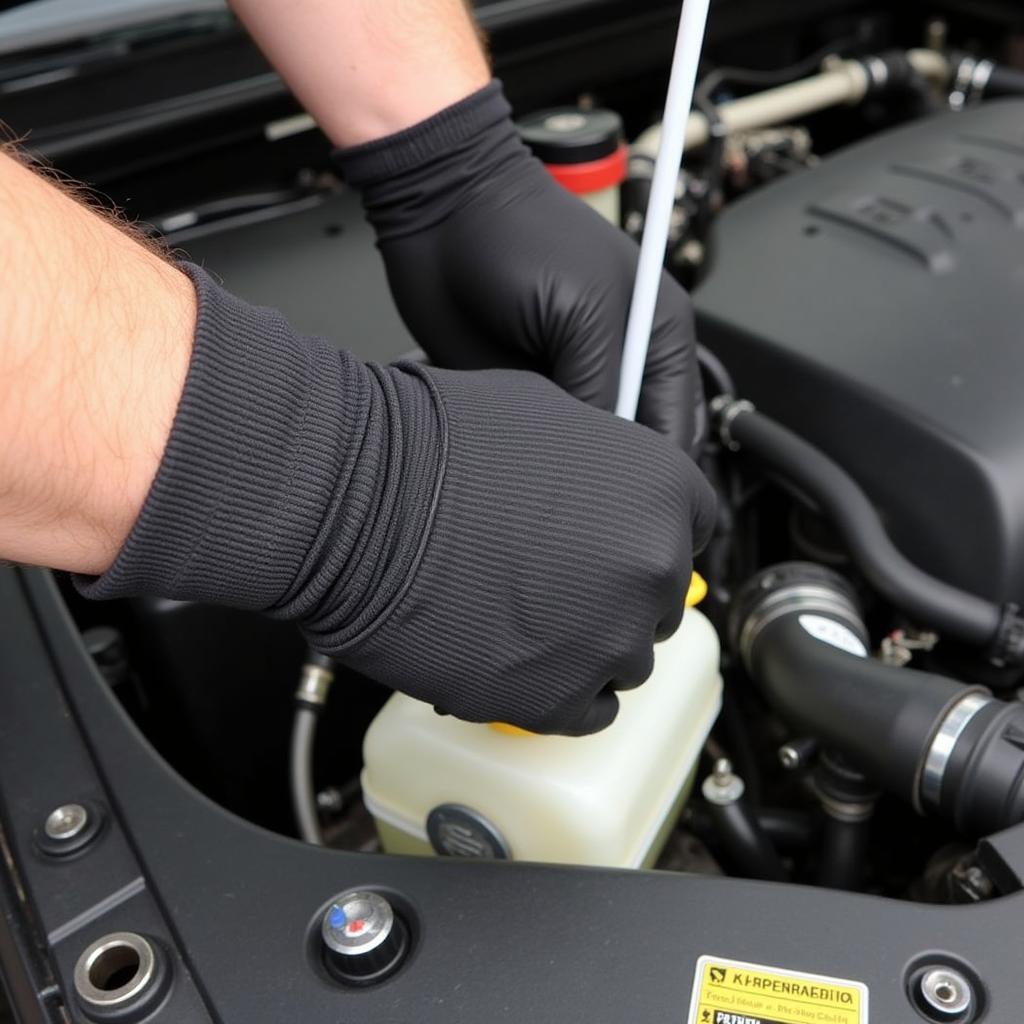Maintaining the correct Car Maintenance Radiator Fluid is crucial for a healthy engine. Neglecting this vital fluid can lead to overheating, costly repairs, and even complete engine failure. This comprehensive guide will equip you with the knowledge to understand, maintain, and troubleshoot your vehicle’s cooling system, focusing on the all-important radiator fluid.
Understanding Car Maintenance Radiator Fluid
What exactly is car maintenance radiator fluid? It’s more than just colored water. It’s a specially formulated coolant designed to regulate your engine’s temperature, preventing it from overheating or freezing. This fluid, often referred to as antifreeze, is a mixture of ethylene glycol or propylene glycol and water. The specific ratio of these components determines the fluid’s freezing and boiling points, making it suitable for various climates. Choosing the right radiator fluid is essential for optimal engine performance and longevity.
Why is Car Maintenance Radiator Fluid So Important?
Your engine generates significant heat during operation. Without a proper cooling system, this heat can quickly damage critical components. Car maintenance radiator fluid absorbs this heat and circulates it through the radiator, where it’s dissipated into the atmosphere. This continuous cycle keeps your engine operating within a safe temperature range. Beyond temperature regulation, radiator fluid also protects against corrosion within the cooling system.
 Checking Car Radiator Fluid Level
Checking Car Radiator Fluid Level
Choosing the Right Car Maintenance Radiator Fluid
Not all radiator fluids are created equal. Using the wrong type can lead to serious problems. Always consult your owner’s manual for the manufacturer’s recommended fluid type and concentration. Common types include IAT (Inorganic Additive Technology), OAT (Organic Acid Technology), and HOAT (Hybrid Organic Acid Technology). Each type has a different lifespan and chemical composition, so using the correct one is essential.
Decoding Radiator Fluid Colors
While color can be a helpful indicator, it’s not the sole determinant of fluid type. Green, orange, yellow, and red are common colors, but different manufacturers may use different colors for the same type of fluid. Always check the label and specifications rather than relying solely on color.
Checking and Topping Up Your Radiator Fluid
Regularly checking your car maintenance radiator fluid is a simple yet crucial maintenance task. When the engine is cold, locate the radiator cap (usually marked with a warning symbol) and carefully open it. The fluid level should be between the “min” and “max” marks on the reservoir or radiator. If the level is low, top it up with the correct pre-mixed fluid. Never open the radiator cap when the engine is hot, as the pressurized system can cause serious burns.
What if my radiator fluid is constantly low?
A consistently low fluid level indicates a leak somewhere in the cooling system. This could be a simple hose issue or a more complex problem within the radiator or engine block. Ignoring a leak can lead to overheating and severe engine damage. Seek professional help if you suspect a leak.
Flushing Your Radiator Fluid
Like any other fluid in your car, radiator fluid degrades over time and loses its effectiveness. Flushing your radiator fluid, usually every 2-5 years or as recommended by your owner’s manual, is crucial to maintain the cooling system’s efficiency and prevent corrosion. This involves draining the old fluid and replacing it with fresh coolant.
Expert Insight: “Regularly flushing your car’s radiator fluid is like changing the oil – it’s essential preventative maintenance that protects your investment,” says John Miller, ASE Certified Master Technician. “Don’t wait for a problem to arise; stick to the recommended maintenance schedule.”
Expert Insight: “Using the wrong type of radiator fluid can be just as detrimental as not having enough,” adds Sarah Chen, Automotive Engineer. “Always refer to your owner’s manual for the correct specifications.”
Conclusion
Proper car maintenance radiator fluid management is vital for your vehicle’s health and longevity. By understanding the different types of fluids, checking the levels regularly, and adhering to a proper maintenance schedule, you can prevent costly repairs and ensure your engine stays cool and performs at its best. Need assistance with your car’s cooling system? Connect with the experts at AutoTipPro! Call us at +1 (641) 206-8880 or visit our office at 500 N St Mary’s St, San Antonio, TX 78205, United States. We’re here to help keep your car running smoothly.






Leave a Reply